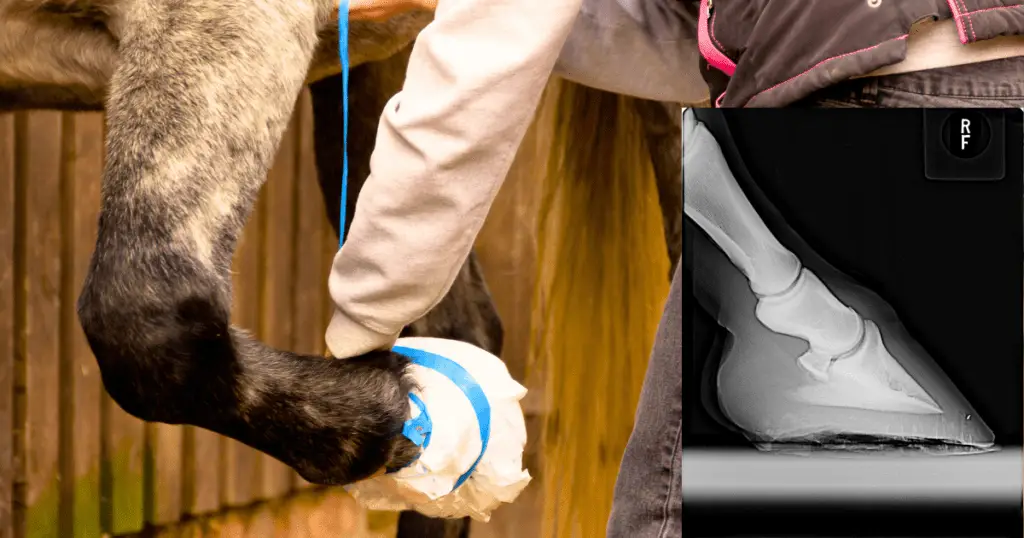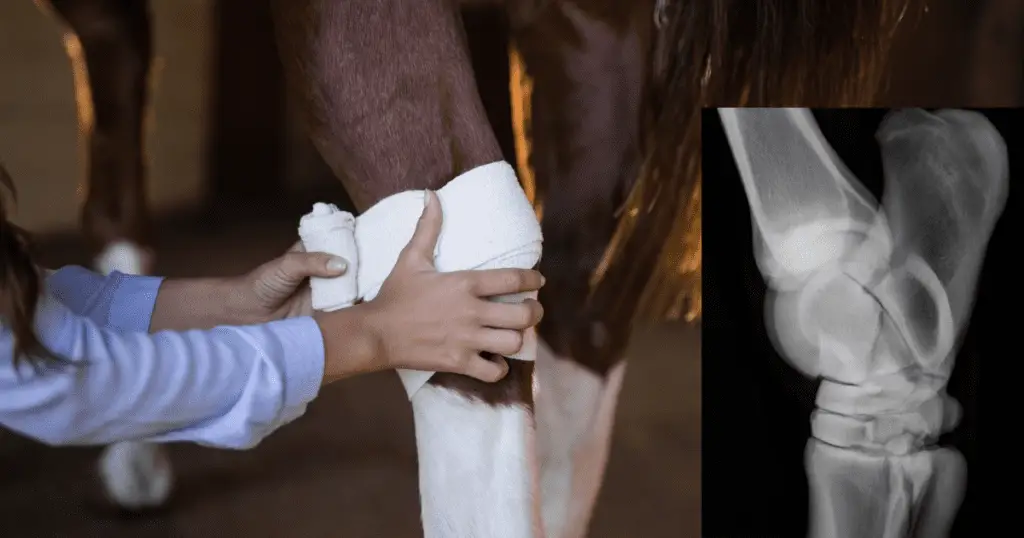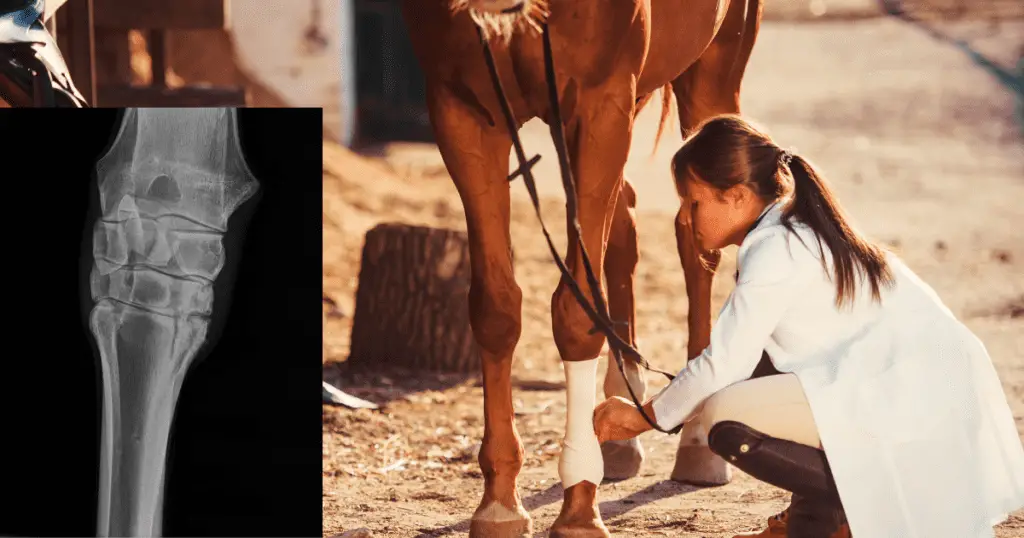Learning How to bandage a horses hoof is a critical skill for any horse owner, handler, or caregiver. A proper hoof bandage can protect the hoof, prevent or treat injuries, and support the horses overall health and well-being. Here are the steps to bandage a horses hoof:
Materials:
- A clean, dry bandage such as Elastoplast or vetwrap
- If wound present a protective padding such as melolin or poultice
- A roll of adhesive tape such as Elastoplast
- A pair of scissors
- A clean, dry cloth or brush
- A hoof pick

How to bandage a horses hoof – Complete 5 Step Guideline With Video
Step By Step Guideline
Step 1: Prepare the hoof Before applying a bandage
You need to clean and prepare the horses hoof. First, pick up the hoof and use a hoof pick to remove any dirt, debris, or other foreign objects from the hoof underneath and on the walls. Be careful not to pick too aggressively, as you could cause pain or injury. Once the hoof is clean, use a clean, dry cloth or brush to wipe it down and remove any moisture or sweat. If there is a wound or puncture to the hoof sole or walls apply a disinfectant such as betadine or chlorhexidine now and cover with a poultice or protective pad.
Step 2: Apply the bandage.
Next, take the bandage and place the centre of it over the bottom of the hoof. Wrap the bandage around the hoof, in a type of figure eight pattern going up over the heel bulbs and then to the front and over the sole again, making sure it is snug but not too tight. You want the bandage to stay in place, but you don’t want to restrict blood flow or cause discomfort to the horse. Continue wrapping the bandage around the hoof until you reach the pastern and stop just below the fetlock or “ankle”.
Step 3: Secure the bandage.
Once the bandage is wrapped around the hoof, it’s time to secure it in place. Use adhesive tape to wrap around the bandage, starting at the top of the hoof and working your way down. Be sure to overlap each layer of tape slightly to ensure that the bandage is fully covered and that it won’t come loose.
Step 4: Trim the excess.
After securing the bandage, use a pair of scissors to trim any excess tape or bandage material. Be careful not to cut too close to the horses skin or hoof, as you could cause injury or irritation.
Step 5: Monitor the bandage.
Finally, monitor the bandage regularly to ensure that it stays in place and doesn’t cause any discomfort or irritation to the horse. Check the bandage daily by lifting the hoof to make sure they haven’t walked through the bandage and replace it as needed, or as directed by a veterinarian. You should also watch for signs of infection or other issues, such as swelling, discharge, or lameness.
Video: How To Bandage A Horses Hoof
Conclusion
In summary, bandaging a horses hoof involves cleaning and preparing the hoof, applying a bandage, securing it with adhesive tape, trimming any excess material, and monitoring it regularly. A properly applied hoof bandage can protect the hoof, prevent or treat injuries, and promote overall health and well-being for the horse. It’s essential to learn this skill and to consult with a veterinarian if you have any questions or concerns about hoof care.
Also Read:



